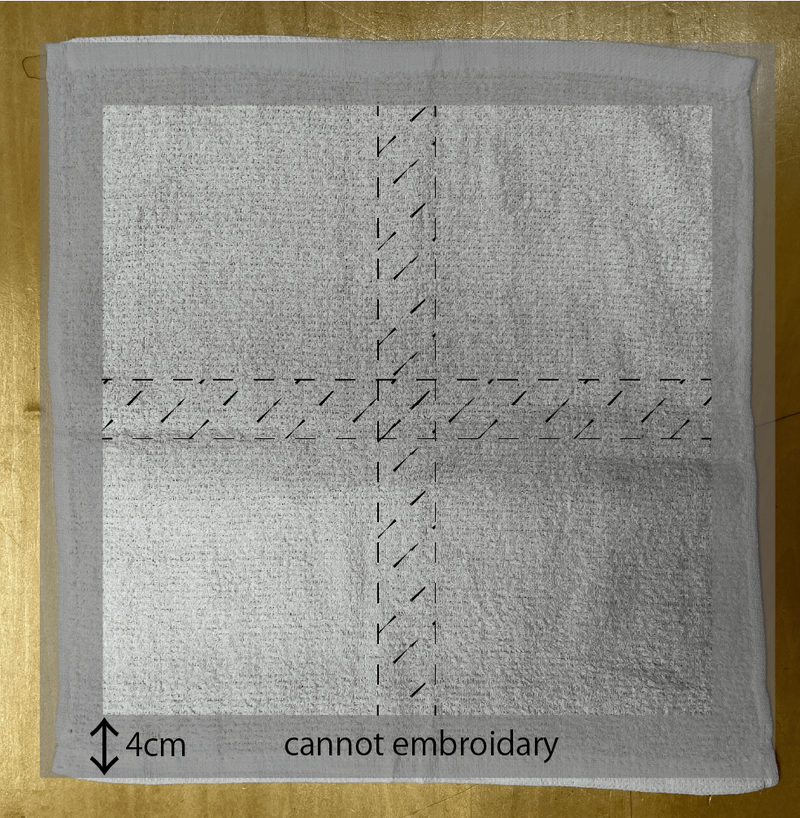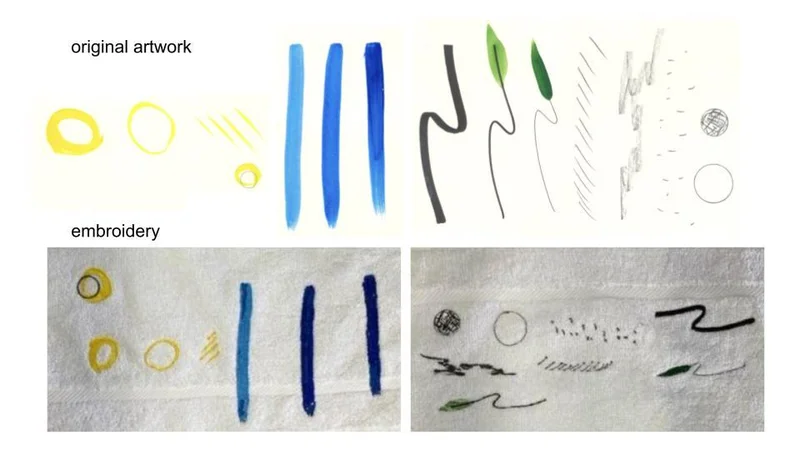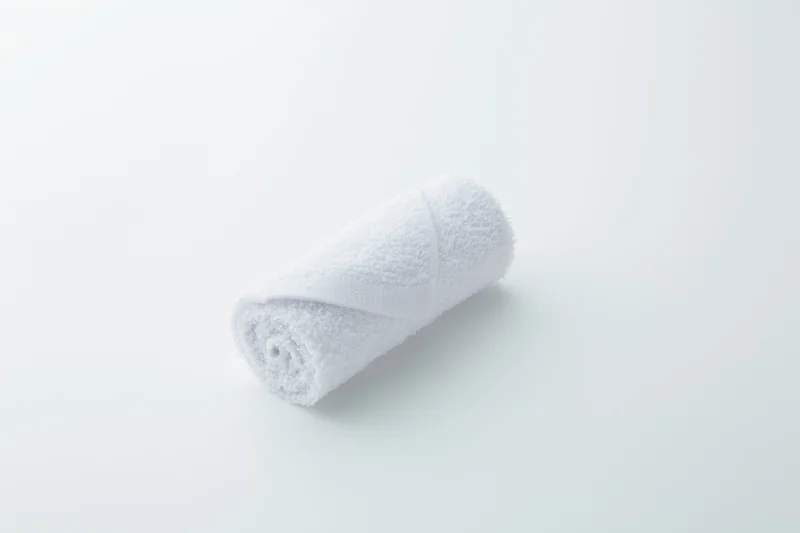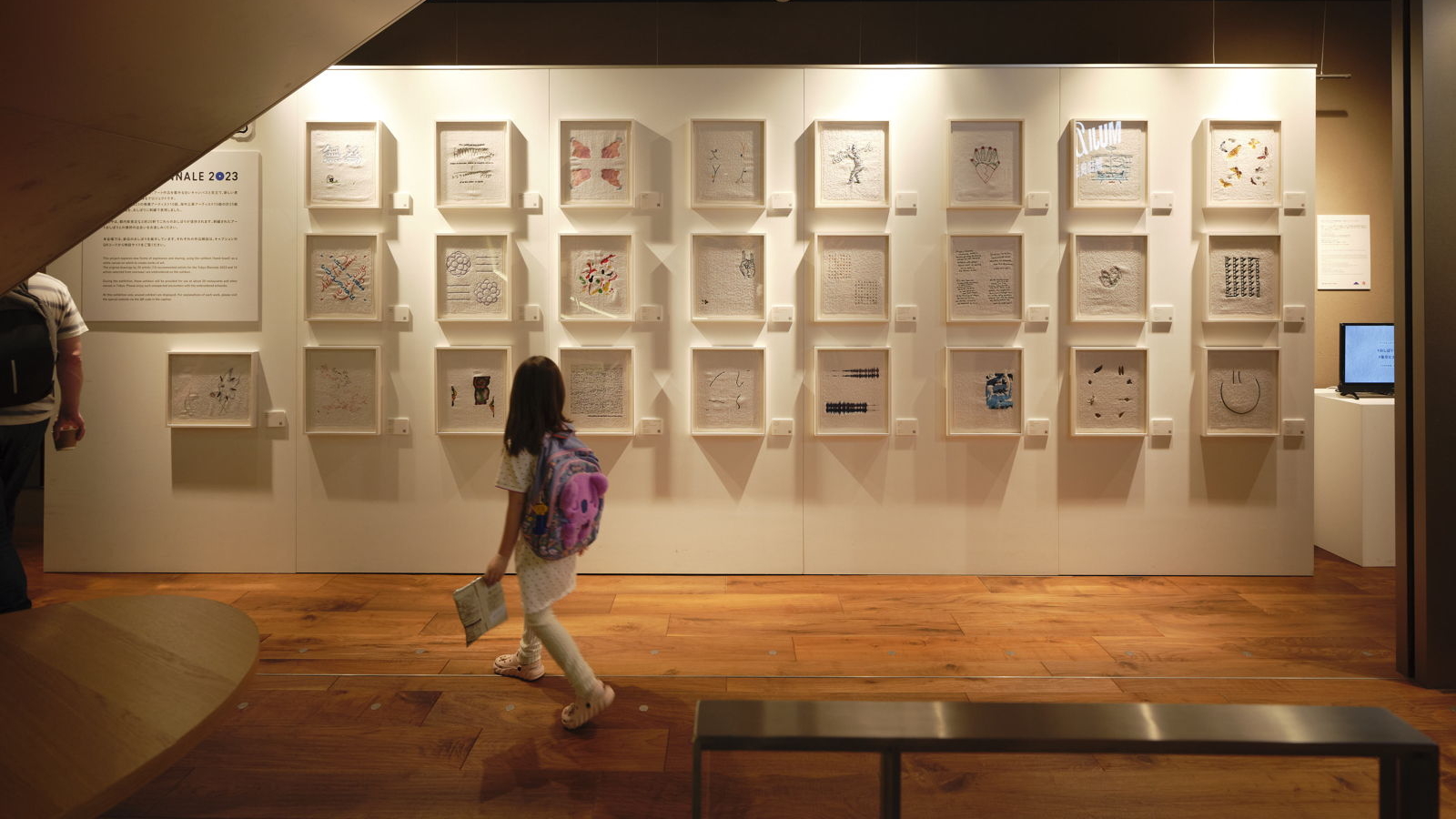

OSHIBORI Linkage | International Open Call for Artists

Application Period: 2023.6.5 - 2023.6.25
*This call for applications has been closed. Thank you very much to all applicants. The results of the artist selection will be announced on this website as soon as they are determined.
Tokyo Biennale 2023 now invites artists based overseas to create an original artwork to be embroidered on oshibori for “OSHIBORI Linkage,” one of this year’s projects. We look forward to receiving your submissions.
There are probably few people living in Japan who have never used an oshibori, a small, moderately moistened towel served in restaurants for guests to wipe their hands. The origin of this practice is said to date back to the Heian or Edo period, according to one theory. Despite its humble existence, oshibori have the power to relieve tension, soothe fatigue, and invigorate the spirit of guests. It is not only a traditional tool for hand hygiene; offering a source of coolness in the summer and warmth in the winter, it is also filled with the spirit of Japanese hospitality. But its existence is still unknown outside of Japan.
OSHIBORI Linkage is an attempt to bring the intimate experience of diverse expressions that transcend national borders to the capital city of Tokyo by using oshibori as a small canvas. The embroidered oshibori, based on original artworks by selected artists, will be served in restaurants and other establishments mixed in with plain hand towels. Customers visiting the venues will surely enjoy chance encounters with these small works of art. Since the oshibori are also reusable items that are environmentally friendly, people will encounter these works repeatedly throughout the exhibition period, which will conclude with an exhibition that brings them together in a special venue.
“Linkage” is both the theme of Tokyo Biennale 2023 and the generic name for the projects that will be developed for the Biennale. OSHIBORI Linkage will connect the expressions of artists from around the world to Tokyo and explore new forms of connection between food culture and art, which has long been nurtured in Japan. Furthermore, by transforming oshibori into works of art, this project aims to draw attention to the Japanese culture of oshibori and to promote the spirit of oshibori hospitality around the world, establishing oshibori as an internationally recognized term.
Statement
Oshibori culture, which has taken root in Japan since ancient times, is steeped in the spirit of hospitality that seeks to cleanse the body of guests and relieve fatigue. Thus far, we have expanded the benefits of oshibori by adding value according to TPO (time, place, occasion), such as fragrance, temperature, and antiviral function. Now, a completely new value will be added to oshibori: art. We are excited to see what kind of chemical reaction will take place.
We are confident that OSHIBORI Linkage will be the first step toward fulfilling our long-held vision of opening the door to the world for oshibori. We look forward to receiving your submissions and seeing your wonderful works of art.
Executive Committee of the Project to Make OSHIBORI an Internationally Recognized Term
(chairman: Katsuyuki Fujinami [President & CEO, FSX, Inc.])
15 artists
Masato Nakamura
Artist. General Director of Tokyo Biennale 2023. Professor at Tokyo University of the Arts, Department of Painting.
Min Nishihara
Independent Curator. Mental Health Therapist. General Director of Tokyo Biennale 2023. Professor at Akita University of Art.
50,000JPY
*In addition, each participating artist will be presented with two oshibori embroidered with their original artwork.
*Photo data of the exhibition sent by e-mail.
*Listing in the official Tokyo Biennale catalog and website. Each artist will be presented with a copy of the catalog.
Summer Period: August - September 2023
Fall Period: Saturday, September 23 – Sunday, November 5, 2023 (TBD)
During Summer Period, oshibori will be offered to visitors at affiliated restaurants and other establishments in Tokyo.
Each oshibori will be collected after use by visitors, washed, and served repeatedly. Approximately 20 partner venues (as of May 2023) will serve oshibori across the four wards—Chiyoda-ku, Chuo-ku, Bunkyo-ku, and Taito-ku—of the Northeastern area of central Tokyo.
In the Fall Period, an exhibition combining oshibori served to visitors during the Summer Period and unused oshibori embroidered with the artworks will be held.
Special venue to be determined (gallery in Tokyo area).
Please submit the following documents via the application form

Please refer to the following samples as a guide to artworks that can be made with embroidery. 
Please use the application form link below to (1) fill out the applicant’s basic information, (2) upload the image data of the original artwork, and (3) upload the artist’s portfolio.
Monday, June 5 – Sunday, June 25, 2023, 23:59 (Japan time zone)
The results of the selection process will be announced on the Tokyo Biennale website by June 30.
Selected artists will be contacted individually.
| June 5 – 25 | Applications accepted |
| July 7 | Artists selected and notified |
| July 21 | Images of embroidered artworks sent via email and finished products confirmed (modifications are permitted only once) |
| August 3 | Embroidered oshibori completed |
| August 31 | Payment of the reward |
| August 7 – November 30 | Summer Period: Oshibori available at partner venues |
| September 23 – November 5 | Fall Period: Exhibition of oshibori at a special venue |
| November 6 – November 30 | Embroidered oshibori and catalog (one copy) sent to artists |
oshibori@tokyobiennale.jp
Oshibori is a moistened towel used to wipe hands, and is one of the items offered to customers mainly of restaurants that symbolize the spirit of hospitality unique to Japan. Oshibori are not only used to wipe hands and remove dirt, but also have a relaxing psychological effect. A cold oshibori on a hot day or a warm oshibori on a cold day, in particular, has the power to relieve tension and soothe fatigue. Simultaneously providing hygiene and hospitality, oshibori are a uniquely Japanese tool of omotenashi, the philosophy of Japanese hospitality. Oshibori are often served to customers by an attendant as they begin to say the word irasshaimase (welcome), and are an important item that creates the first contact with the customer.

The predecessor of oshibori, which is understood to have originated in Japan, is said to have started in the Heian period (794-1185) when court nobles offered “moistened cloths” to their guests when inviting them into their homes. In the Edo period (1603-1867), travelers soaked a tenugui cloth in a tub provided by the innkeeper and squeezed it to wipe their dirty hands and feet at the entrance to the inn.
This is said to be the origin of today’s oshibori (the action of shiboru, or squeezing, is the origin of the word oshibori). Oshibori was born as an expression of the spirit of hospitality, where guests were not only provided lodging but also offered a comfortable and relaxing stay to ease their fatigue. The hospitality shown to guests later became firmly established as oshibori culture. Although oshibori culture once faded away along with the escalation of war, the custom of serving oshibori was revived in the postwar period of development as a uniquely Japanese culture of hospitality and has continued to the present day.

LINKAGE
OSHIBORI Linkage
An experimental project to encounter art from around the world at restaurants by using the Japanese oshibori (moistened hand towel) as a white canvas.
details